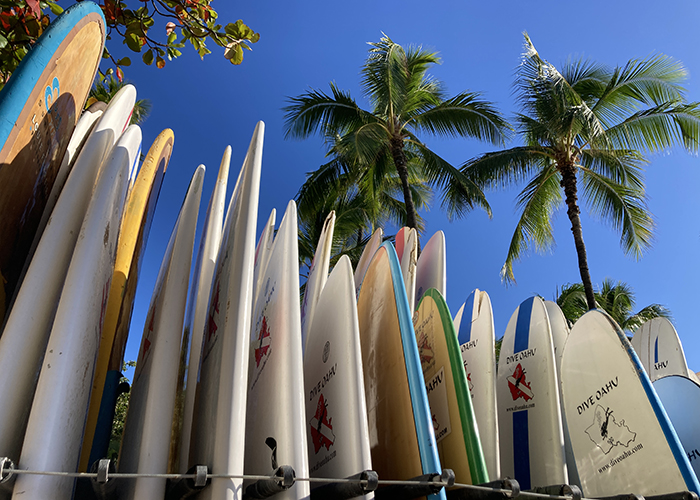 Previous Day |
Honolulu, HI 18.4 mi (29.6 km) |
 Next Day |
E hele kākou, e nā mea a pau!
After visiting Pearl Harbor yesterday, I still had a whole day and a half on Oʻahu, and I was determined to make the most of it! Scanning Honolulu for signs of history, I first headed up the Pali Highway to visit a place called Hānaiakamalama, a place that means “Bright Light” and was the summer palace of Queen Emma and King Kamehameha IV!
 |
As you’ll remember from a few days ago, Kamehameha IV was the king who named ʻIolani Palace! Well, his wife’s name was Emma Kalanikaumakaʻamano Kaleleonālani Naʻea Rooke, or Queen Emma for short. She inherited this house in the cool, misty mountains from her uncle, John Young II, and it became a nice retreat from the hot coast during the summer months. Queen Emma left a lasting legacy in Honolulu by founding Queen’s Hospital in 1859 and opening St. Andrew’s Priory School for Girls in 1867. Controversial for her mixed ancestry, she was still a candidate for the throne after her husband and son died, but the legislature approved King David Kalākaua instead.
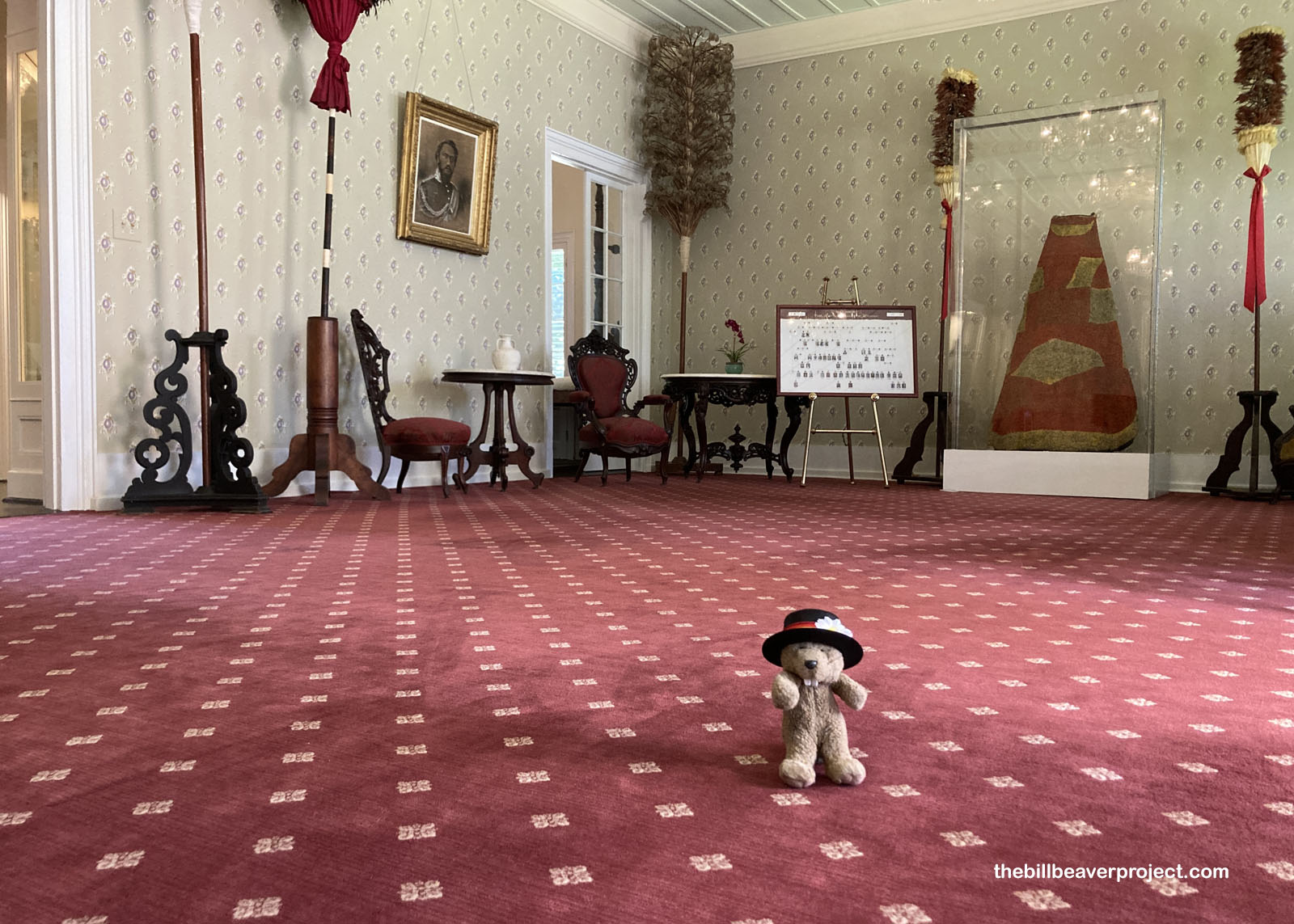 |
I had to reserve a time slot to visit the palace, but being midweek, I wasn’t battling any crowds. The ladies representing the Daughters of Hawai‘i were very nice, gave me a self-tour guide, and sent me on my way. Inside were the rooms of the royal parents and the room of the prince, Albert Edward, along with the clothes of the royal family and the silver christening cup sent to the prince from England, which tragically did not arrive before the prince’s mysterious death. This palace was almost demolished in 1915 to make room for a baseball field, but the Daughters of Hawai‘i have since preserved it as a piece of royal Hawaiian history!
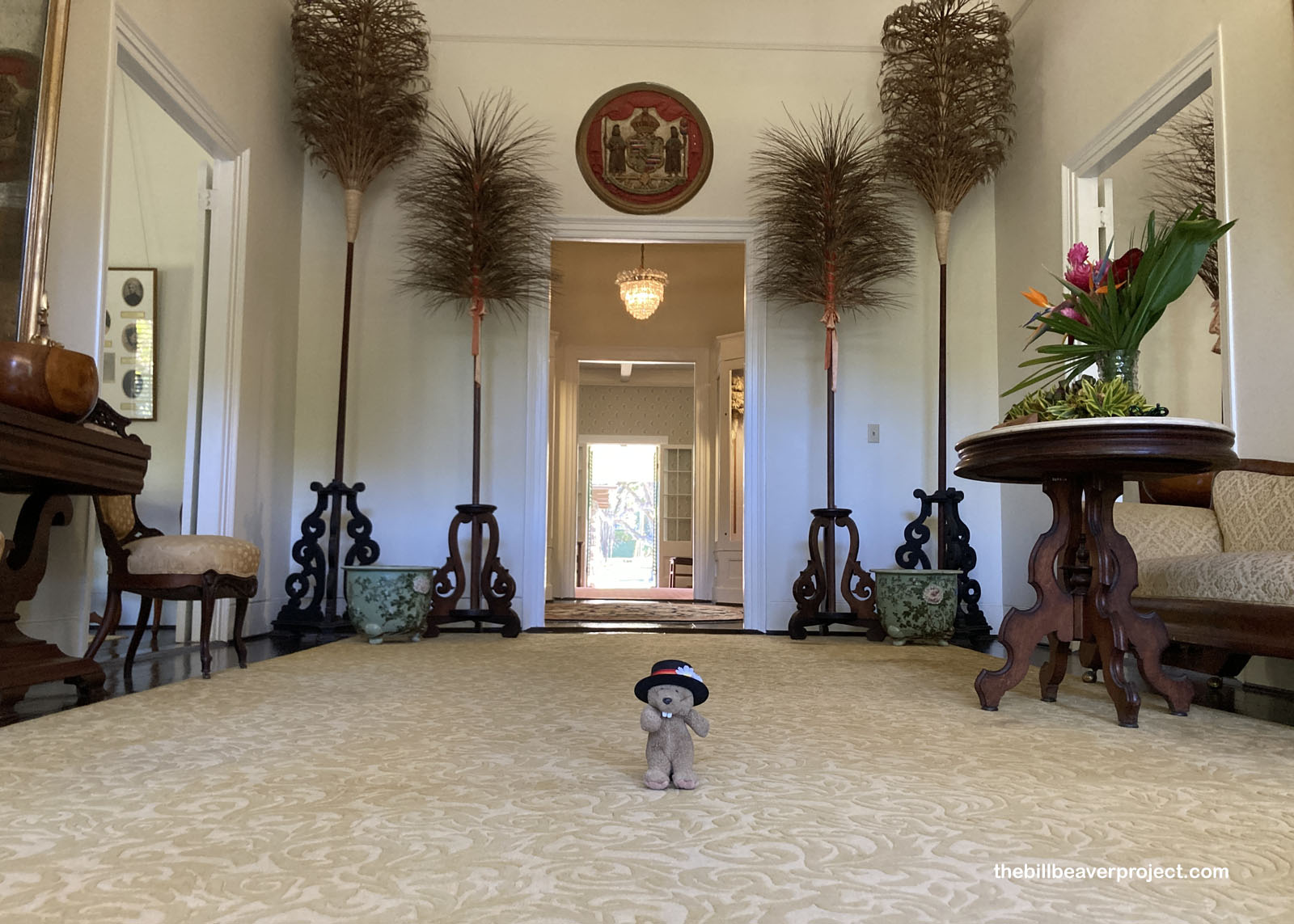 |
Not far from the palace were much older pieces of Hawaiian history, the Nu‘uanu Petroglyph Complex! Also on the National Register, these petroglyphs are shrouded in mystery, in more ways than one! Only accessible by a remote trail from a hidden parking lot in Nu‘uanu Memorial Park, the petroglyphs feature people and dogs, but no one is 100% sure what they mean! According to a plaque, the top contender is a mythological dog monster named Kaupe, who was believed to live in the Nu‘uanu Valley and would lure folks out into the dark to eat them!
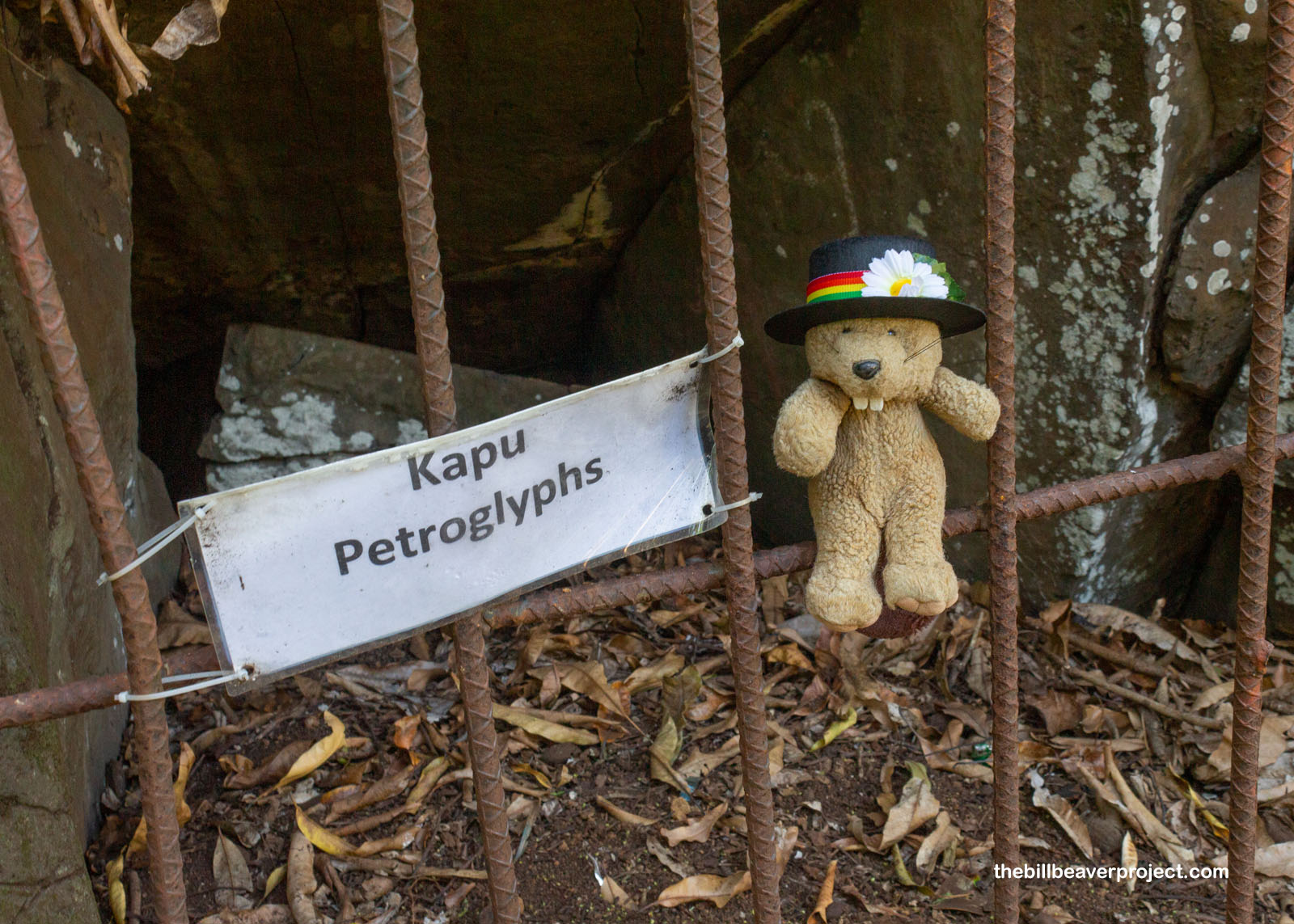 |
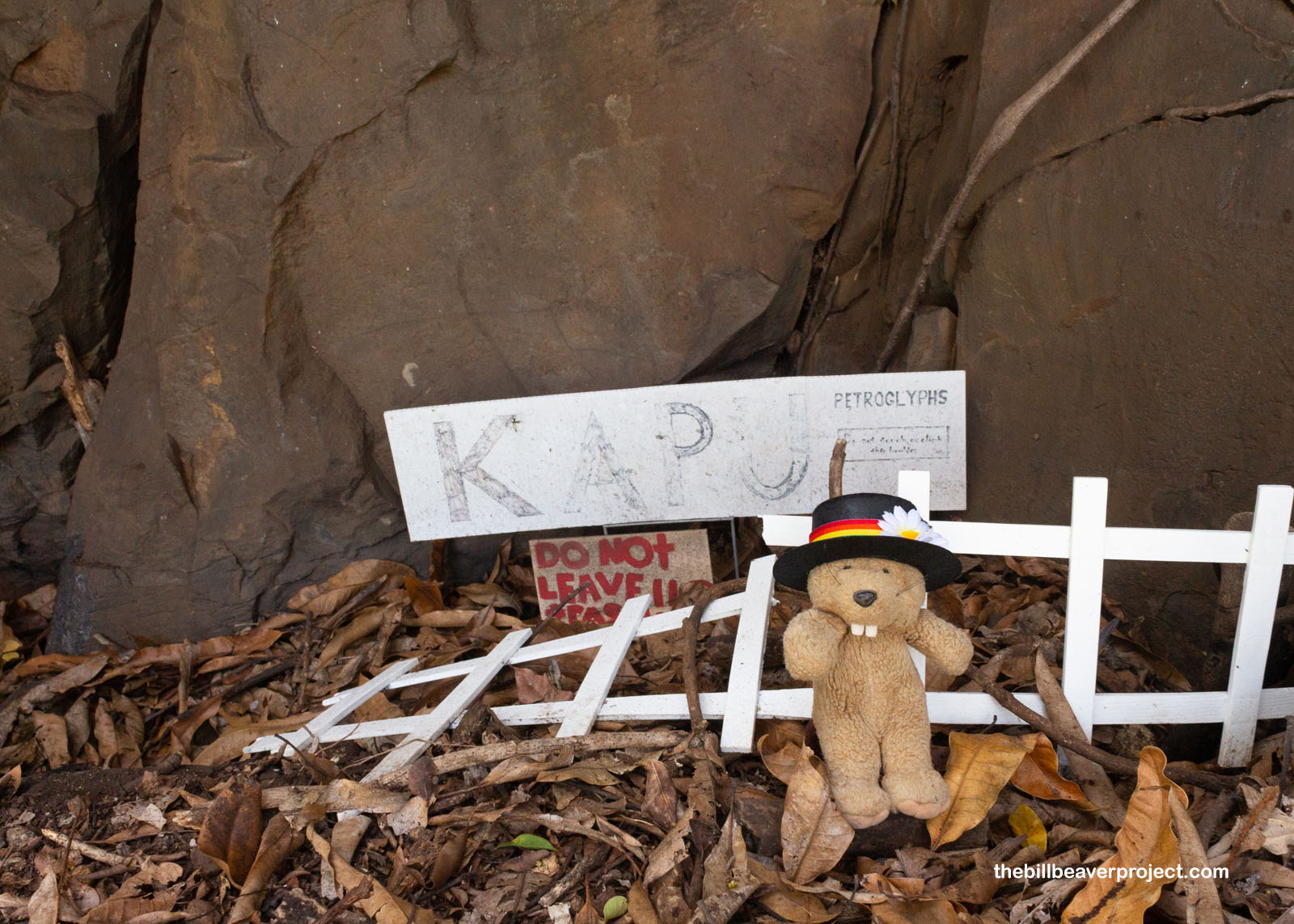 |
The petroglyphs I spotted were much smaller than the panels I’d seen in the photos while researching the site, so I set off up the trail to find the big gallery. I made it as far as Kapena Falls, where there were lots of folks living in tents, one of whom sent me on a quest to find another dog, who was alive but missing, but after an hour of stomping around by the river, I found neither dog nor extra gallery of petroglyphs!
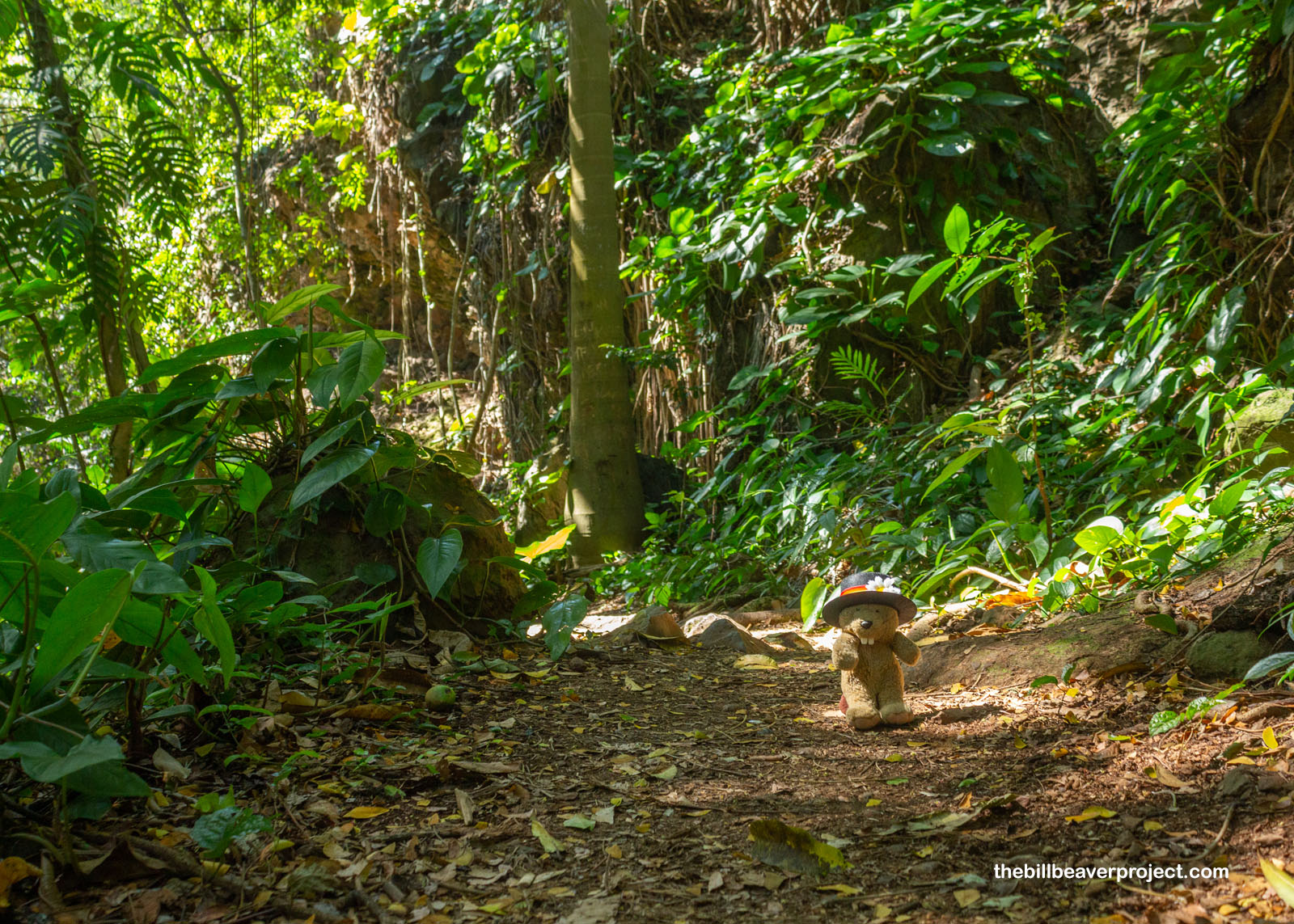 |
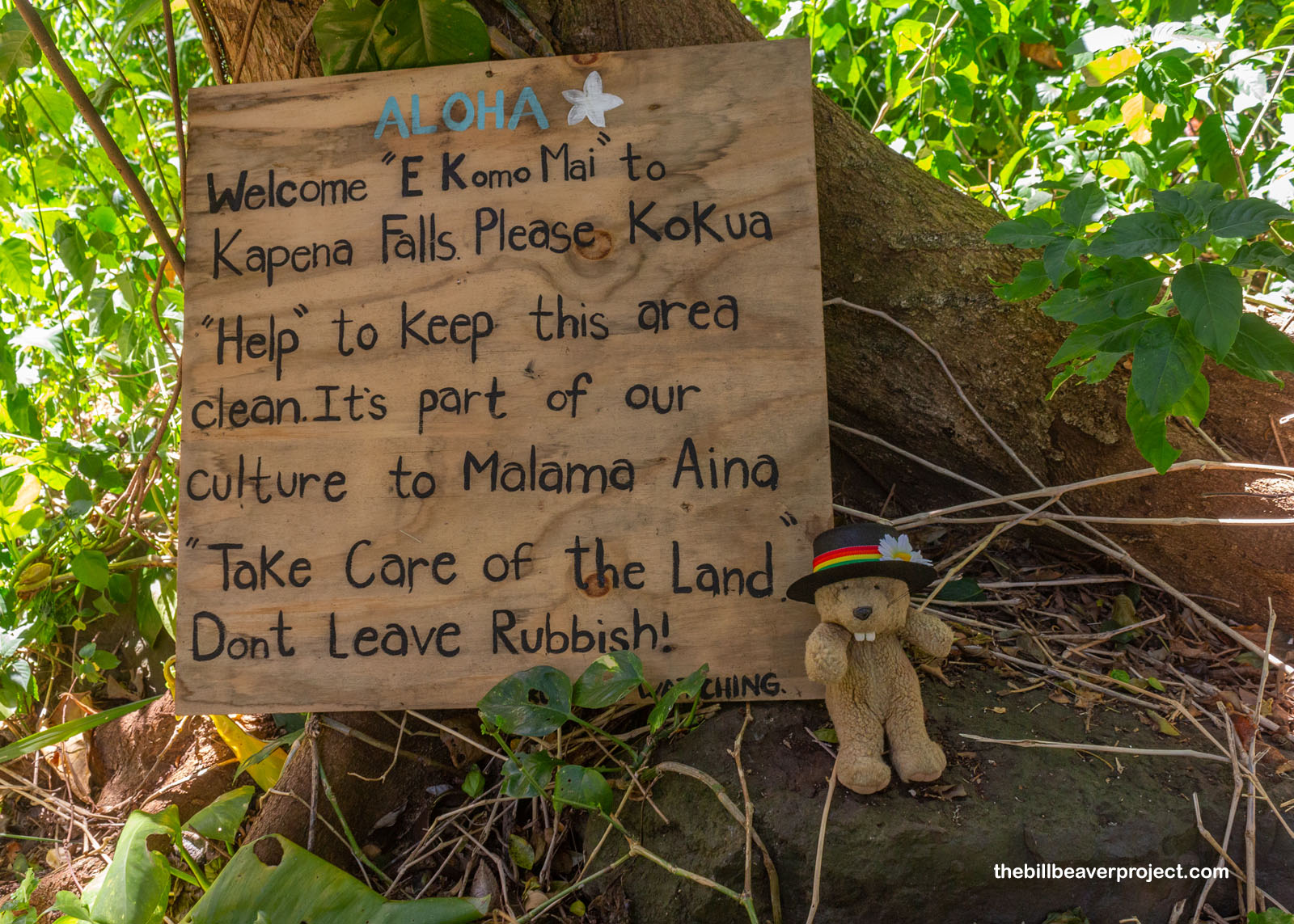 |
Equally disappointing was my attempt to hike the famous volcanic crater, Diamond Head! It turns out, if you don’t live on the island, you need to make reservations to enter the park, and by the time I found that out, it was already booked full for the next two days! Dang it! So instead, I headed down to stroll Waikiki.
Right away, I found a statue of iconic swimmer and surfer, Duke Paoa Kahanamoku! One of the main folks who popularized surfing on the mainland, he also developed the flutter kick technique and set three world records in the 100-yard freestyle event! In the last seven years of his life, he was the official greeter for famous folks visiting O‘ahu, so it was fitting that his statue welcomed folks to the beach!
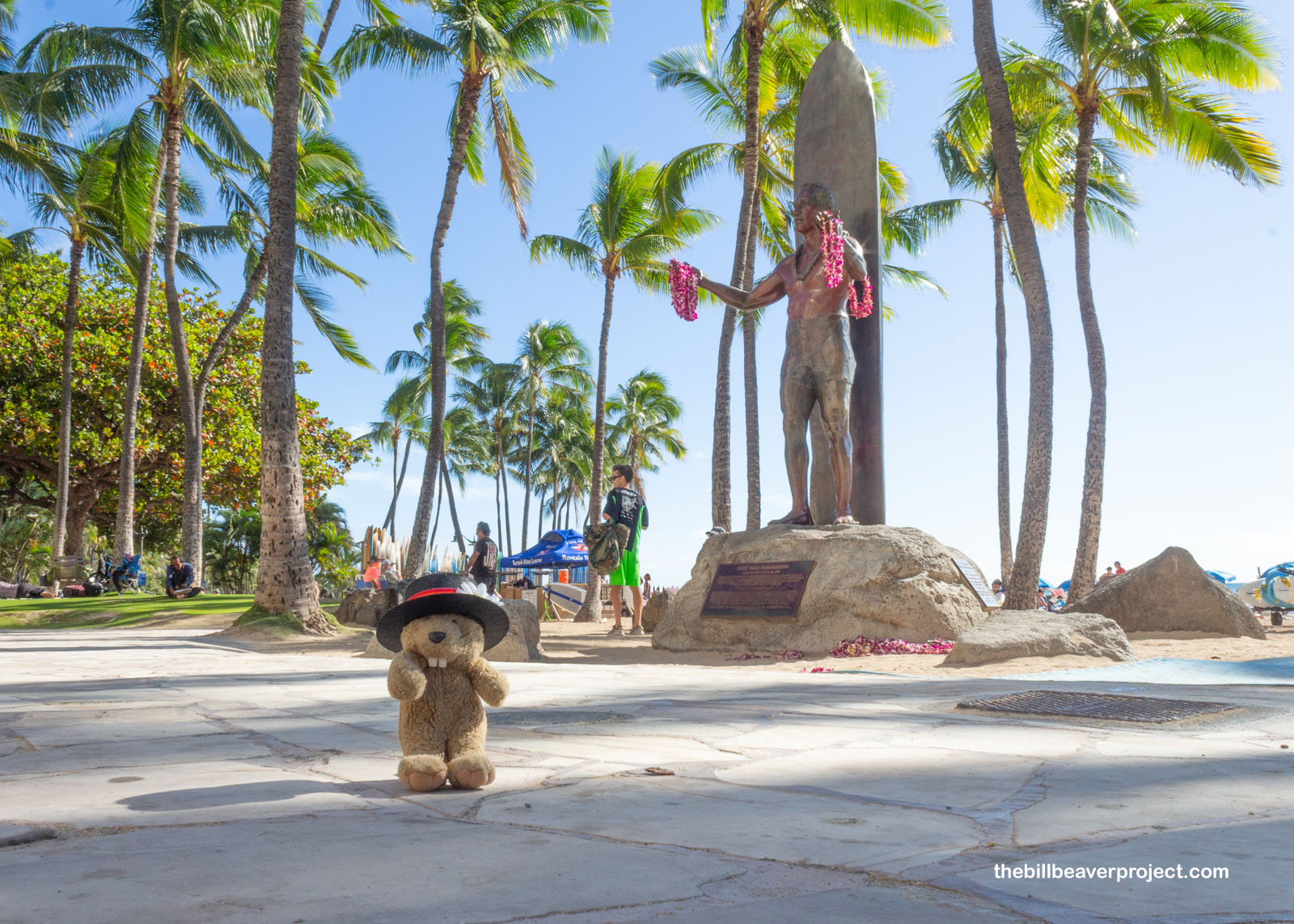 |
Not far from the statue, I encountered three huge volcanic rocks that, to the first-time visitor, didn’t seem like much. But these, as a knowledgeable bystander pointed out, were the Nā Pōhaku Ola Kapaemāhū a Kapuni, also known as the Life Stones of the Tahitian healers, Kapaemāhū and Kapuni! They’re two stones of four, the others named for Kīnohi and Kahaloa, all of whom belonged to a third gender called māhū, similar to Two Spirits. They brought these stones here in the 1500s, all the way from the Tahitian island of Raiatea, and it’s believed that they transferred their healing mana into these stones before they returned home!
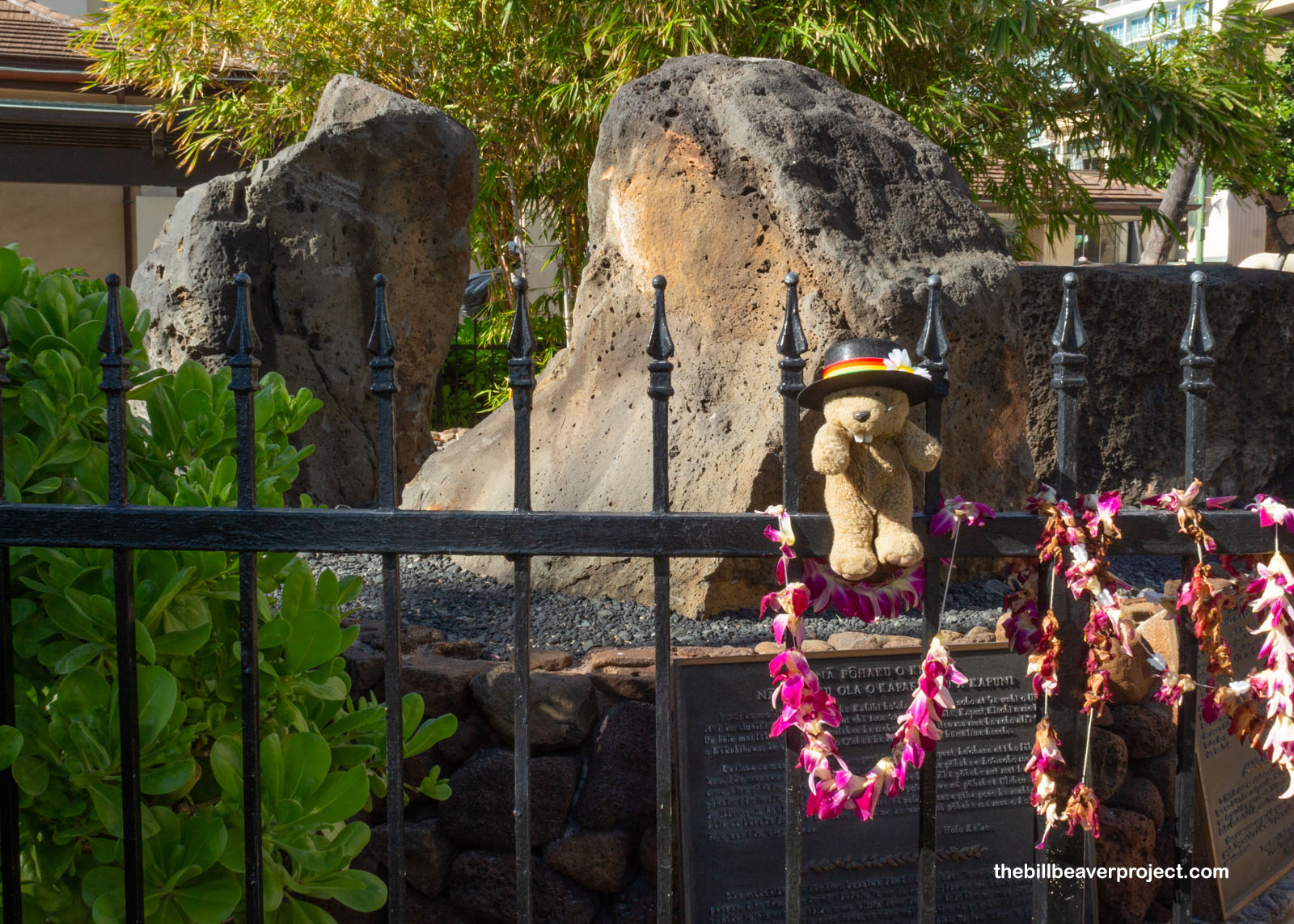 |
Waikiki sure has changed since the time of these four māhū, but as I strolled the sands and looked back, I was still amazed at its beauty! Like Ipanema in Brazil and Railay in Thailand, this place is packed with people and the hotels that house them, but some parts, the mountains and the sea, are still standing, still eternal, still colorful, and still worth visiting (if you can find a patch of sand big enough to enjoy)!
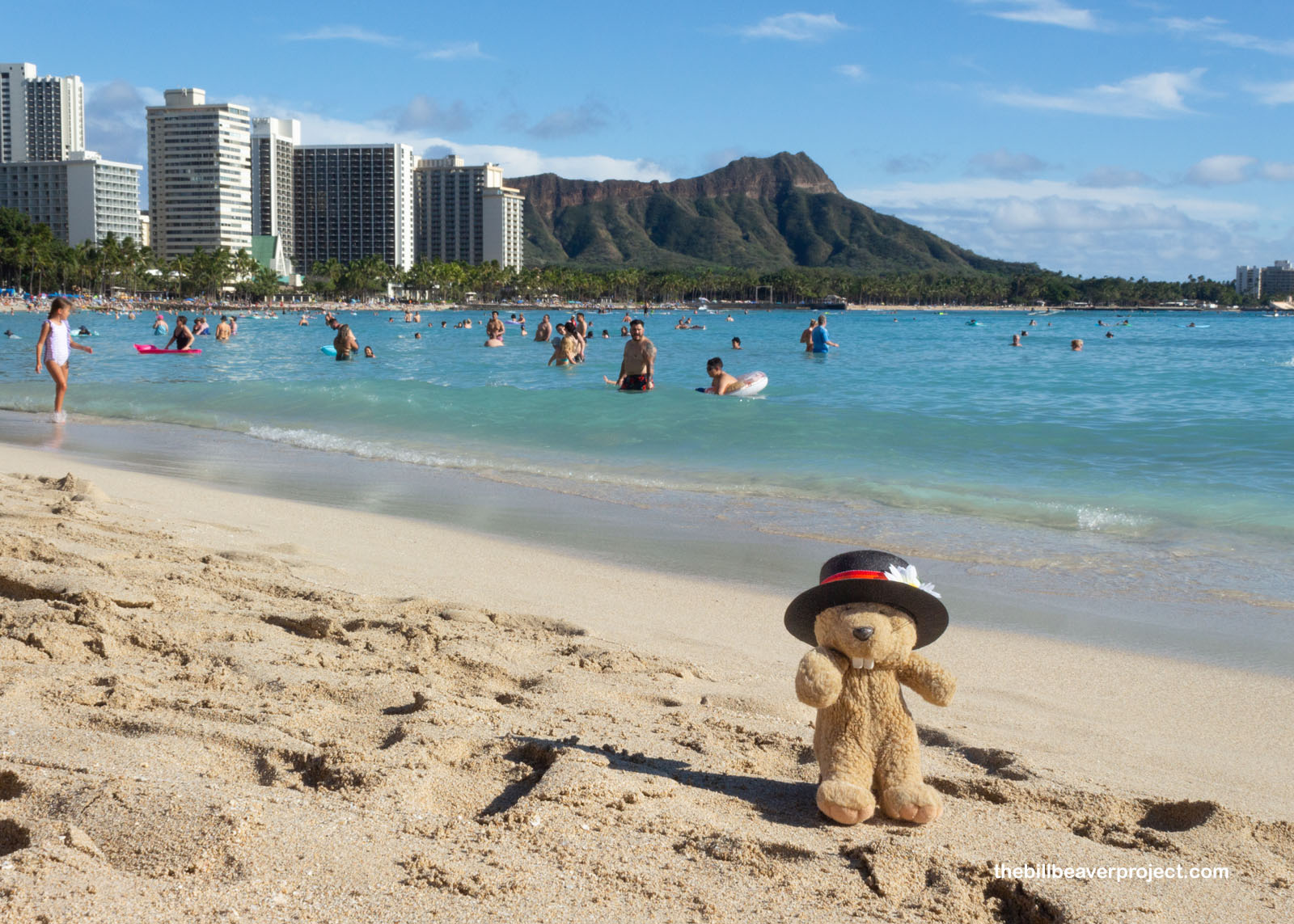 |
Because I couldn’t find much space, I moseyed my way out from the beach in search of some more tasty poké, taking a peek at the Moana Hotel, the oldest still standing on Waikiki! It was designed by Oliver Traphagen and completed on March 11, 1901 in anticipation of visitors to the recently annexed islands.
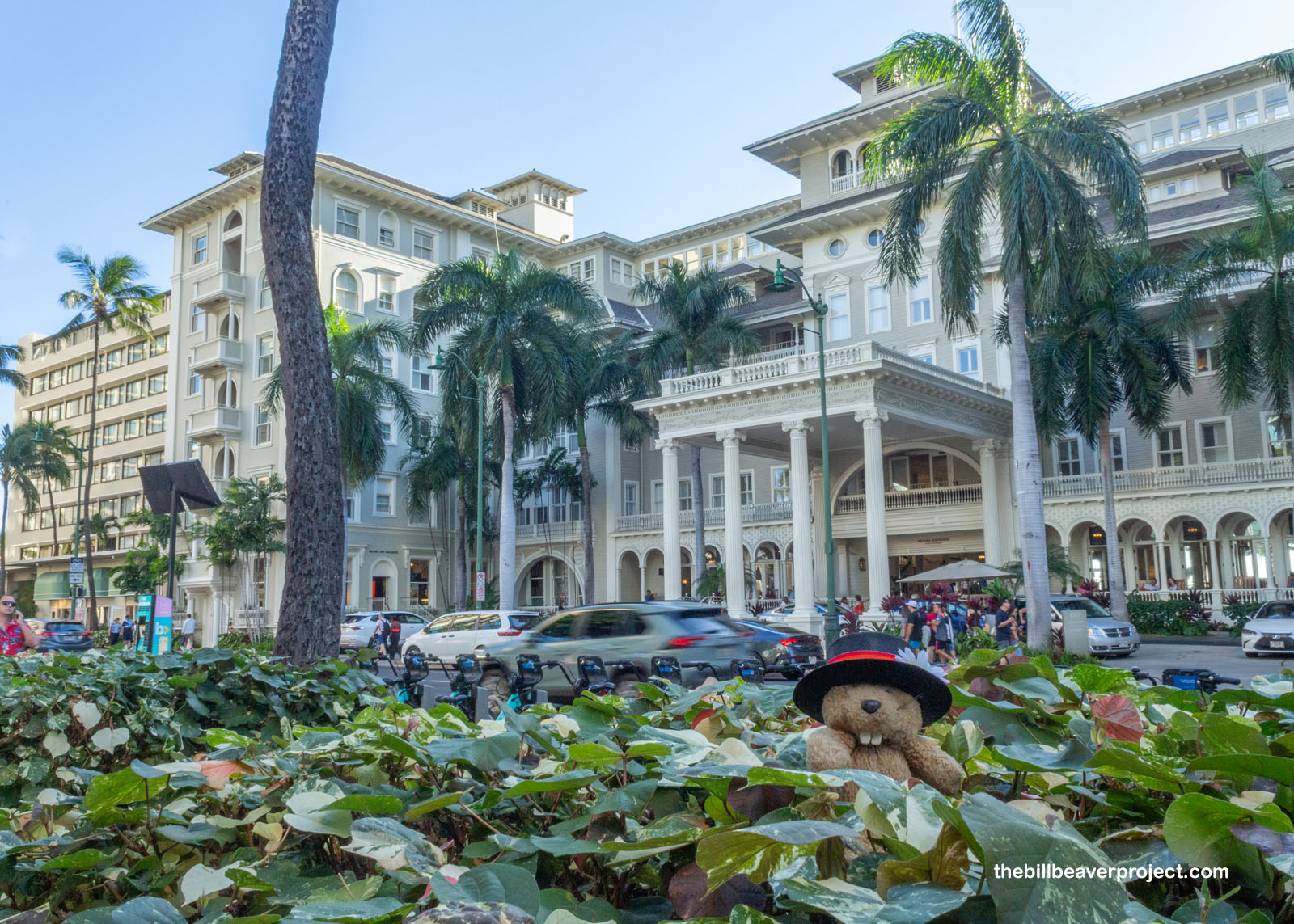 |
I wrapped up my stroll taking in a majestic banyan tree! Brought to the islands by missionaries from India, the Hawaiian banyans have become iconic on their own. In fact, over on the Big Island, it became customary for famous visitors to plant new banyan trees along Banyan Tree Drive. Once I go there, I’ll have to see the trees planted by the likes of Amelia Earhart, Franklin D. Roosevelt, and Louis Armstrong!
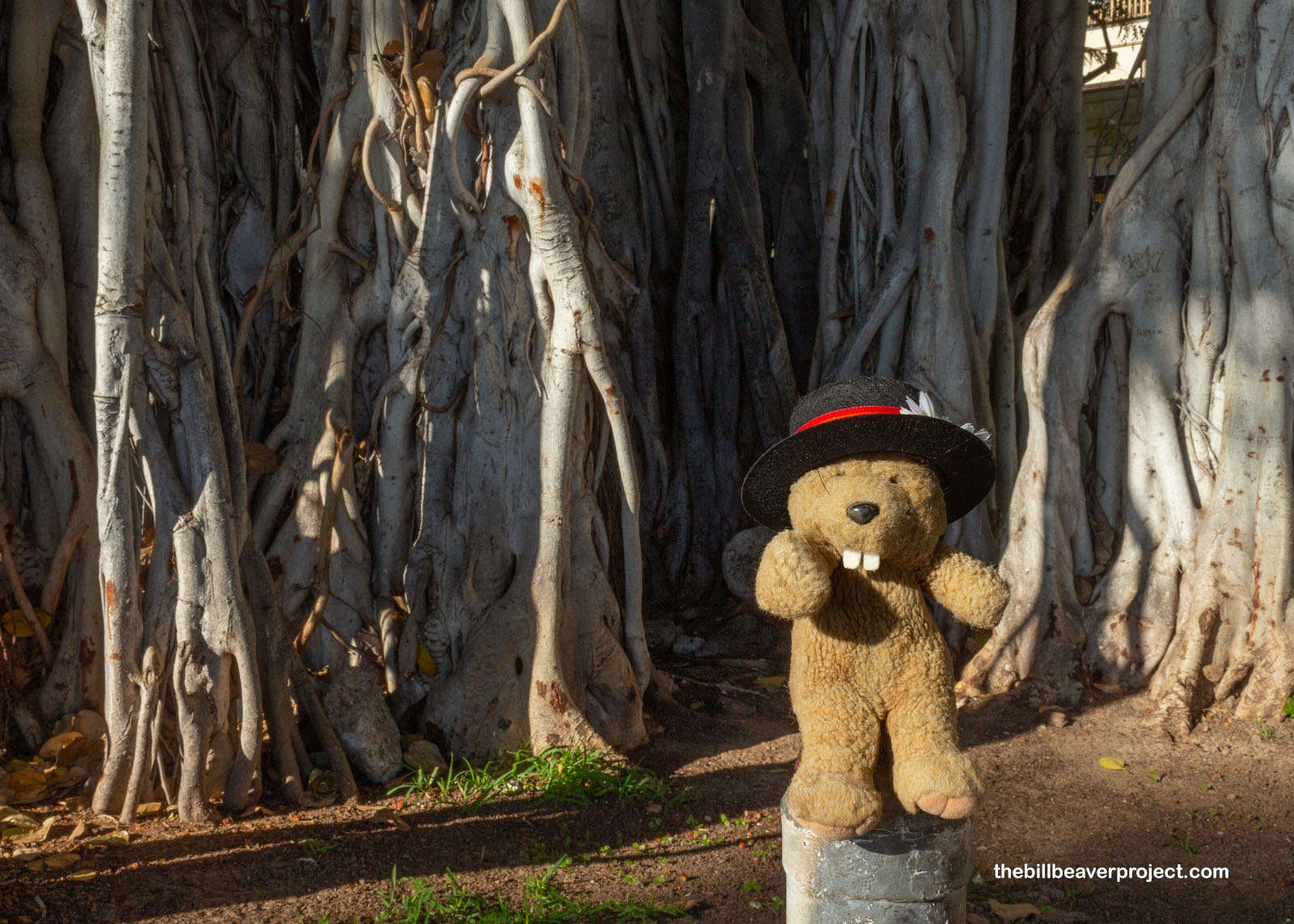 |
Tomorrow, I’ll be seeing some more magnificent trees when I visit historic Foster Botanical Garden before my flight home. Until then, I’m going to tuck myself in for some dinner, some sweets, and a recharging slumber for another half day of island adventure!
E ʻike wau iā ʻoe ma laila!

 Previous Day |
Total Ground Covered: 110.2 mi (177.3 km) |
 Next Day |
